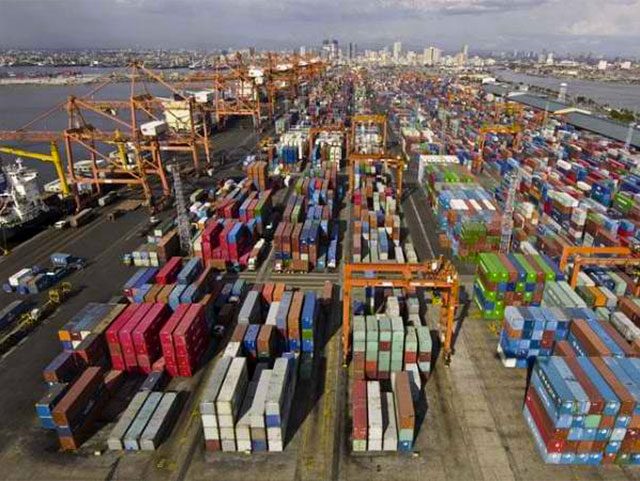SUMMARY
This is AI generated summarization, which may have errors. For context, always refer to the full article.

MANILA, Philippines – A 2.4% growth in merchandise imports was recorded for full-year 2014, which the National Economic and Development Authority (NEDA) attributed to significant decreases in the value of imported mineral fuels and lubricants, capital goods, and consumer goods.
NEDA said on Tuesday, February 24, the growth came despite the 10.6% drop in December 2014, when the Philippine Statistics Authority reported that total payments for imports was at $4.9 billion compared to the $5.4 billion in December 2013.
The December 2014 drop was “generally” affected by plunging oil prices, according to Economic Planning Secretary and NEDA Director General Arsenio Balisacan.
“Over the immediate term, the combination of strong world crude oil supply growth and weak global demand is expected to reduce imports via lower oil prices and possibly weaker demand for the country’s exports, thus tempering imports,” he explained.
Still, for the full-year 2014, the value grew by 2.4% from $62.4 billion in 2013 to $63.9 billion.
Balisacan said the growth, relative to the strong performance of the country’s merchandise exports, reduced trade-in-goods deficit in 2014 from $5.7 billion in 2013 to $2.1 billion.
“This by far is the narrowest trade gap recorded since 2001,” he added.
Port congestion a ‘significant risk’
The issue of port congestion is still a “significant risk” for both exports and imports, Balisacan said.
The manufacturing sector may have felt its “lingering effects” toward the end of 2014. Both the value and volume of major commodity imports and exports declined and slowed down despite the holidays.
“A more lasting solution to the port congestion and other transportation/logistics issues need to be in place, specifically in Metro Manila where approximately 25 percent of all imports passes through. Transportation constraints could further lead to unnecessary escalation of commodity prices,” he said.
But the higher value of imported raw materials and intermediate goods “partially tempered” the overall import decline in December 2014. Total payments for inward shipments went up by 12.7%, reaching $2.4 billion in December 2014, compared to $2.1 billion in December 2013.
Balisacan said domestic consumption and investment could sustain imports. He foresees the sector continuing its growth momentum, which, in turn, will keep imports of raw materials and intermediate goods brisk.
“Stable prices, availability of jobs, and more vigorous business activity are seen to further increase consumption spending that could support a healthier demand for imports of consumer products,” he added.
The People’s Republic of China was still the country’s top source of imported goods, with a 13.7% share to total value of inward shipments in December 2014.
Second was United States of America with a share of 9.8%, followed by Germany (8.4%), Singapore (8.3%), Japan (7.9%), Taiwan (7.1%), South Korea (6.9%), Saudi Arabia (5.7%), Malaysia (5.5%), and Thailand (4.7%). – Rappler.com
Add a comment
How does this make you feel?
There are no comments yet. Add your comment to start the conversation.